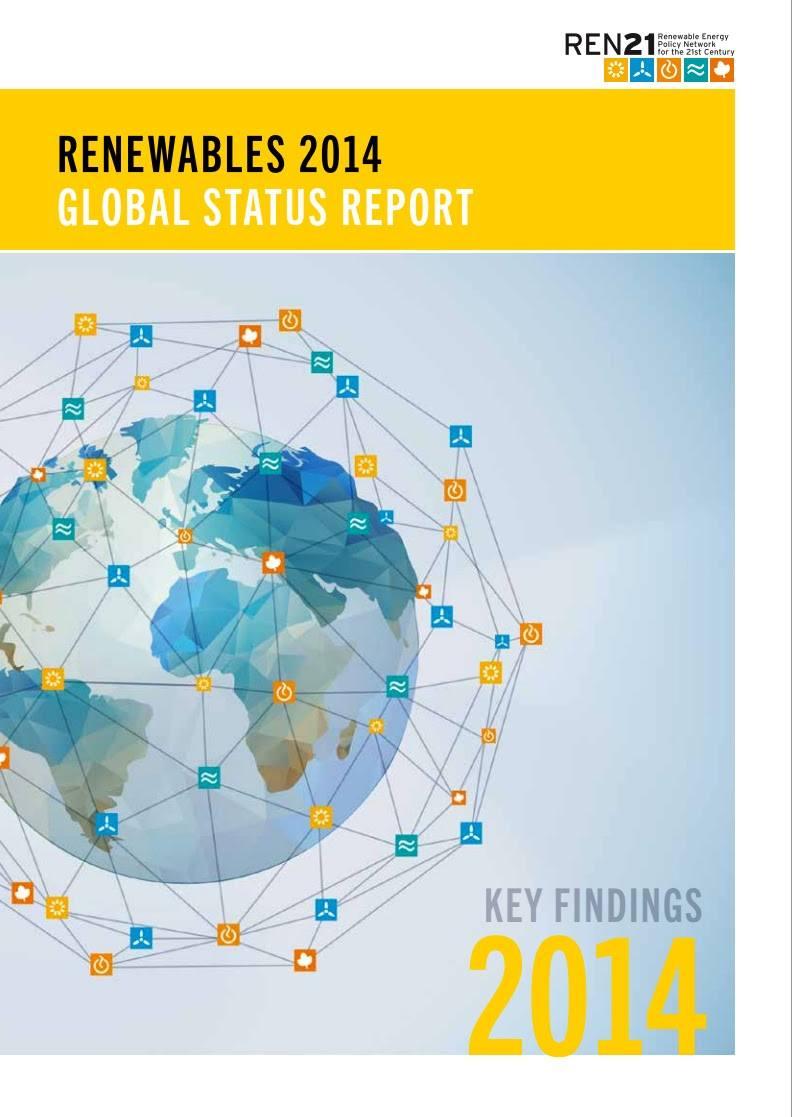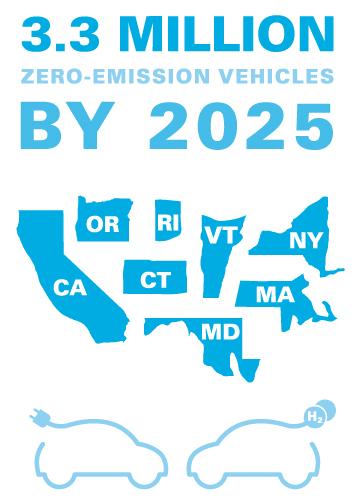Unilever Brewing 'Future-Proof' Tea Crops Through Genomic Selection in Kenya


Unilever is taking agricultural risk into its own hands under a new partnership with a genetics research firm for a pilot project on one of its plantations in Kenya. The Anglo-Dutch company announced last week that it will begin a research and development project to create more resilient, so-called “future-proof,” tea crops using a natural breeding method known as genomic selection.
The project will pair Unilever with Nature Source Genetics, a New York-based genomics company that will sequence and analyze tea crop genomes. “The first objective of the project is to use new sequencing methods to monitor and capture, in a core collection, most of the tea diversity that exists today in natural varieties of Camellia sinensis,” Clive Gristwood, senior vice president of Unilever’s R&D Refreshment division, told TriplePundit.com via email -- referring to the Latin name of the species used for black tea.
“Capturing the broadest possible tea genetic diversity is important in order to make sure that we don’t lose key genes that might help improve resistance to climate change or new tea pests in the future,” explained Gristwood.
Unilever is the world’s leading tea manufacturer and buys on average around 12 percent of global supply, which it markets worldwide under the Lipton, PG Tips and Brooke Bond brand names. The company grows about 10 percent of its annual supply from its own plantations in Tanzania and Kenya, including the Lipton tea plantation in Kericho where the genomic tea project will begin.
In Kenya, tea is big business. As of 2012, the country was the world’s leading exporter of black tea by weight, and the industry employs 600,000 smallholder farmers and an additional 150,000 plantation workers. The country also hosts one of the tea industry’s largest international auction houses in Mombasa. Unilever, through its buying agent Cargill, is that auction’s largest buyer and takes an average 25 to 30 percent of all Mombasa exports.
The second objective of the new R&D project in Kericho, according to Gristwood, is to use a process called genomic selection to grow heartier, higher-yielding plant varieties. Through genomic selection, researchers can identify traits like drought resistance and yield in individual tea strains and then cross those “parent” breeds to create a more desirable crop. The process “significantly shortens the time required for breeding and will be used to develop the all-natural future-proofed varieties of tomorrow,” said Gristwood.
Unilever spokespeople emphasized that genomic selection is not connected to the type of genetic engineering used to create controversial genetically-modified organisms (GMOs).
While project partner Nature Source Genetic’s website indicates that the company sometimes works with clients to apply intellectual property (IP) rights to the fruits of their research, Gristwood told Triple Pundit that Unilever does not intend to pursue IP rights as part of this project. “Ultimately we want to work in partnership with others to secure a sustainable future for tea for everyone to benefit from,” he said.
Unilever has pledged to source all tea for its Lipton brand from Rainforest Alliance Certified estates by next year, and to have 100 percent of its tea sourced from suppliers that meet its sustainable agriculture code by 2020.
Tea prices in Kenya are currently at a six-year low, averaging $2.04 per kilogram at the end of May and down 20 percent from the same time last year. According to the the Tea Board of Kenya, national production hit a 10-year high in 2013 and the market remains at risk for oversupply this year.
Image credit: Windslash, Flickr
Is it Time to Stop Calling Uber a Disruptive Innovation?


If I ask you to describe Uber -- the ride-sharing service -- in one word, what would it be? Probably words like app, better, convenience, surge pricing, luxury, service, sharing, fun, cashless and future would come up.
My guess however is that the most popular word would be ‘disruptive.' Why? Just look at the headlines of articles focusing on Uber: “Invasion of the Taxi Snatchers: Uber Leads an Industry's Disruption,” “Airbnb, Coursera, and Uber: The Rise of the Disruption Economy,” “Disruptions: Ride-Sharing Upstarts Challenge Taxi Industry,” are just some of the many examples you can find online with the combination Uber + disruption.
But what does it actually mean? In most cases describing Uber as disruptive or a disruptive innovation refers to the notion that the company brought a fundamental change, not just small-scale modifications, to the taxi market -- reinventing in a way the whole taxi experience.
Now, while obviously Uber seems to meet the definition of disruptive innovation as most people understand this concept, it would be interesting to see if Uber actually meets the criteria for disruptive innovation defined by the person who actually coined and popularized the term – Prof. Clayton M. Christensen.
First, here’s a reminder of what Christensen meant when he was talking about disruptive innovation. According to Christensen, disruptive innovation is “a process by which a product or service takes root initially in simple applications at the bottom of a market and then relentlessly moves up market, eventually displacing established competitors.” Christensen distinguishes this type of innovation from ‘sustaining innovation,' which he describes as an attempt to bring better products to established customers in existing markets.
So now that we have a better idea of what Christensen was talking about, let’s dive into specific criteria differentiating disruptive innovation from sustaining innovation and see if Uber meets these criteria. Luckily for us, Scott Anthony, managing partner of the innovation and growth consulting firm Innosight (which Christensen founded) and expert on disruptive innovation, did just that on the HBR blog.
The first criterion, Antony explains, for the would-be disruptor is to “follow an approach that makes it easier and more affordable for people to do what historically has mattered to them." In other words, the appeal of disruptive innovations is based on their simplicity, convenience and affordability. Uber no doubt meets the first two, but probably fails on the last; it is considered to be more expensive than taxis, or very similar in its pricing at best, but definitely not significantly more affordable.
Uber’s pricing points however are dynamic not static, for better or worse. The company notoriously uses surge-pricing tactics, where fares are adjusted to reflect demand and can spike up to seven or eight times the norm during snowstorms or holidays. As Annie Lowrey reported in the New York Times Magazine, even customers that are less sensitive to price like Jessica Seinfeld Instagrammed a receipt for a $415 Uber ride with the hashtags #neverforget, #neveragain and #real.
Nevertheless, the company is also reported to drop prices in some cities as part of its price war with Lyft. The result is that, as the Wall Street Journal reports, Uber is now not always the most expensive alternative, and sometimes it’s actually the cheaper one compared to taxis and other car-sharing services.
The second criterion according to Anthony is that “the innovator has to develop a behind-the-scenes advantage: a way of producing a product or service that seems magical from the customer’s perspective and that is difficult for other companies to replicate.” He believes, and I agree with him on this point, that Uber looks solid here with its powerful back-end system that “allows it to manage a real-time network of cars in an extremely simple and potentially low-cost way.” I’m not sure though that Uber’s model is not replicatable, especially when the regulatory system -- which right now is a barrier to entry in many markets -- will adapt to allow similar innovation.
The final criterion, Anthony explains is “whether the would-be disruptor is following a business model that takes advantage of “asymmetries of motivation." In simple terms, that means a disruptor is attacking markets that existing companies are motivated to exit or ignore because they are unprofitable or seemingly too small to matter.
Apparently, Uber doesn’t meet this criterion at all, as it targets traditional taxi customers with some focus on urban, busy consumers that look for convenience and a better experience than the current one provided by taxis.
So the bottom line is that Uber meets less than two (two-thirds of the first and the second) out of the three criteria mentioned above. In other words, it doesn’t really pass the Christensen test for disruptive innovation.
So what would Christensen call Uber? It’s a good question as Uber has some characteristics of disruptive innovation -- simple, easy, convenient and a great customer experience (though not always), as well some characteristics of sustaining innovation – bringing better products to established customers in existing markets and higher prices.
If anything, it seems that Uber is disrupting Christensen’s theory of disruptive innovation, creating a third type of innovation that is neither disruptive nor sustaining according to Christensen’s model.
So maybe it’s time to stop talking about Uber in terms of disruptive innovation and start talking simply about the Uber innovation.
Image credit: Joakim Formo, Flickr Creative Commons
Raz Godelnik is an Assistant Professor of Strategic Design and Management at Parsons The New School of Design. You can follow Raz on Twitter.
Recap: HP Live Twitter Chat from #SB14sd


How does a company that has been practicing responsible citizenship for 75 years drive even more impact for people, the economy and the environment? By making its citizenship efforts and business strategy fully and inextricably intertwined.
HP calls it Living Progress— Today, HP , CSRwire and TriplePundit explored how best to address some of these challenges with other leading companies and thought leaders gathered in the HP Living Progress Exchange at Sustainable Brands 14, in San Diego, California.
Aman Singh, CSRwire’s Editorial Director and Nick Aster, Founder and Publisher of TriplePundit, conversed with Chris Librie, Senior Director, Strategy and Communications, HP Corporate Affairs, live from the HP Living Progress Exchange at Sustainable Brands.
Full stats from today's chat are available in PDF format here.
Image credit: Joshua Hoehne/Unsplash
Six Guidelines to Effective Decision Making


Submitted by Guest Contributor
By Dr. Gilbert Probst and Dr. Andrea M. Bassi
Our socio-economic systems continue to grow and evolve; consequently, our decisions often fail – they are ineffective and create unexpected side effects. The speed of execution is increasing constantly, with markets and systems responding almost immediately, making decision making more challenging. There is little or no room for failure in the new VUCA –Volatile, Uncertain, Complex, Ambiguous – world order.
Given the increasing pressure to make decisions and provide error-free solutions to problems, the question is: How can businesses, governments and NGOs address the complex, interconnected issues of the modern world and provide the best possible outcomes for all stakeholders?
The Guidelines
In our book, Tackling Complexity: A Systemic Approach for Decision Makers, we identify the following guidelines to help decision makers and strategists turn even the most complex issues into opportunities:
- Identify the causes and effects of the problem across social, economic and environmental dimensions. The system is characterized by feedbacks, which may create synergies or cause the emergence of side effects.
- Use a multi-stakeholder approach to take a variety of points of view into consideration and to incorporate as much varied knowledge as possible in the analysis.
- Evaluate the impacts across sectors and find a balanced strategy aimed at improving the entire system’s performance rather than a strategy aimed at maximizing some areas at the expense of others.
- Evaluate the impacts across actors and find an inclusive strategy that will allocate the costs consistently and distribute the benefits fairly across the key actors in the system.
- Think long term and prioritize resilience because success often depends on resilience in the light of unforeseen events, which means focusing on increasing a system’s capacity to absorb change and adapt to it with clear, long-term goals.
- Monitor the performance of the system to learn how—there will be many ways—systems respond to strategy and policy implementation, which provides an opportunity to—step by step—improve decision making by learning about the causes of success and failure to implement these.
Adopting this simple, structured approach is invaluable for those in high-pressure environments, where decision-making not only has to be swift but has to provide the best possible outcomes for all stakeholders across the social, economic and environmental dimensions.
However, how do decision makers get ahead of the curve?
Surveys, Scenarios, Social Media
Organizations like the World Economic Forum (WEF) and Dual Citizen use surveys and social media to capture trends thus leveraging interactions with their constituents to gain a competitive advantage. The use of a multi-stakeholders approach is critical if these organizations are to effectively contribute to their field and develop relevant products and services.
Further, the WEF uses scenarios to foster long-term thinking and prioritize resilience. Building on a wide consultation of stakeholders, these scenarios are based on  extrapolating identified trends and systemically evaluating impacts across actors and sectors.
extrapolating identified trends and systemically evaluating impacts across actors and sectors.
Turning Challenges into Opportunities
This process helps facilitate strategic dialogues among stakeholders that are truly forward-looking and aimed at building sustainable strategies in both the public and private sectors.
For example, working with a wide range of stakeholders, the Forum contributed to building momentum behind economic reforms in Russia through its Scenarios for the Russian Federation that continue to animate policy discussions. Similarly, the Forum facilitated strategy discussions about future challenges for metals and mining companies through its Mining & Metals Scenarios to 2030 that have continuously been used by leading companies in that sector.
Dual Citizen uses social media to monitor and evaluate progress, for instance the impact of policy implementation in the context of low carbon development and the green economy.
Once a strategy is implemented, the system needs to be analyzed and compared with the expected results. An understanding of the dynamic system elements—developed through the strategy and policy formulation and assessment process—will certainly help identify gaps and early warning signs in the monitoring phase.
Dual Citizen combines the analysis of quantitative data and information collected through social media with the perceptions of experts to bridge the gap between history, actual progress and future goals (see the Global Green Economy Index as an example). Decision makers can then design complementary actions to reduce any gaps and prevent negative effects from spreading across the system – removing complexity from the system and enabling innovative decision-making.
Certified Wood Tops the List for International Paper's 2013 Sustainability Report


Being ahead of the sustainability curve isn’t unusual for International Paper (IP). Over the last few years, the company has proven that sustainability goals are just markers to be surpassed. This year, with the release of the 2013 IP sustainability report, the company proved yet again that environmental stewardship is possible in the forestry sector and, in fact, is really what sustains business success. And it's proved that all stakeholders, including consumers, play a direct role in creating that success.
In 2012, IP’s company goals included increasing its certified fiber content by 2020. Fifteen percent certified fiber was a reasonable target for the 70,000-employee company that maintains operations on five continents, but as Teri Shanahan, IP’s vice president of sustainability, pointed out: Reaching that goal seven years early and exceeding it by more than 5 percent reflects IP’s historic focus on sustainable forestry practices.
“We’ve been working on wood fiber certification for about 20 years. So it isn’t a new concept for us,” said Shanahan, who noted that of the 71 million tons of wood IP it buys, a lot of it comes from the U.S., where it has invested significant resources into the certified wood market.
“[The] wood that we buy supports the existence of 21 million acres of forest in the U.S. So our wood comes from well managed, healthy forests that are going to remain forests as long as there is an economic use for those forests.”
Having increased their certified wood content by 22 percent since 2010, IP reset its 2020 goals to 35 percent this year. While those markers are inspired by an increased global recognition that sustainable forests are worth supporting, said Shanahan, “It’s still completely voluntary.” IP recognizes that customers feel they gain value when they realize that purchasing sustainably grown wood helps ensure that the “landowner is replanting wood on that acre and [they are] helping to keep that acre of forest harvested."
IP also made significant gains with regards to air emission reductions in 2013--not only meeting its 2020 goals, but exceeding them by 4 percent.
And in 2013 it notched up the register regarding goals that were either set for 2020, or were initial steps to broader initiatives:
- Greenhouse emissions: It met 5.8 percent of the 20 percent goal for 2020.
- Waste reduction: It developed new strategies to implement in reducing waste.
- LIFE Events: A 21 percent reduction life-changing injury and fatality elimination (LIFE) events since 2010.
Public perception and the role of consumers
Interestingly, Shanahan noted public perception about the forestry sector as one of the company’s greatest challenges these days. It’s not surprising, she said, that consumers often have the impression that if they stop using paper and work even harder to eliminate their dependence on wood products, they’ll save a tree and improve the sustainability of world forest regions. This challenge has helped IP realize that even though it is primarily a B2B (business to business) company, consumer misunderstandings directly affect their sustainability efforts.
“And I think we’re beginning to understand how that lack of information has invited people to … come to exactly the wrong conclusion about our business, which is: ‘Oh darn, when I’m using this piece of paper, that means somebody had to go destroy a tree in a forest, and so that is a bad thing to do.' And we really need to help people understand that sustainable forestry means they are keeping the land and forests for a long, long period of time--hopefully indefinitely. When managed properly, there’s no reason that can’t happen forever.”
To aid in this process, the U.S. Department of Agriculture, with the support of private industry, will be implementing a new Commodity Check Off program to help educate consumers about the value of forestry products. Shanahan likened it to the ‘Got Milk?’ program that educated the public about the value of the dairy industry.
Shanahan said another public misnomer is the concept that electronic debit programs like Pay It Green actually preserve the forests by decreasing dependence on paper products. The logic sounds reasonable, she says, until you consider that forests these days are often replanted via the revenues that are made from market-based products like paper and wood fiber.
“When a paper mill no longer has demand--such as has been the case here in the U.S. where the use of paper is declining because of this electronic substitution--when that happens, that paper mill no longer needs to buy wood. And so the mill closes down and people lose their jobs, which is bad enough, but on top of that, the landowners no longer have anybody to sell their wood to. And so the wood that used to supply that paper mill now doesn’t have a market. And that means that those acres of forest are very likely to be converted to a non-forest use.”
Therefore, increasing the public’s understanding of the consumer’s role in ensuring sustainability in forest initiatives, the impact on the recycling potential that bleach has in paper production, or what happens to paper when it’s added to landfill, for example, is critical to ensuring that forests remain vibrant and properly managed.
But it isn’t always easy. “[If] you’re asking people what they care about as it pertains to the environment, this one is be pretty low on a list of priorities,” said Shanahan. Where forest sustainability does seem to count is in the B2B relationship with those who purchase and use IP’s products, and that’s been invaluable in helping customers to understand why they need to support informed choices about properly managed forests.
IP’s many goals this past year also count indirectly toward increasing the public’s understanding of its role in ensuring that global forests are used properly. Employee educational programs like its First Line Leadership program, which helps educate new leaders about the rising demand for sustainable management practices, and the efforts that IP invests in global business organizations around the world Shanahan said, are all ongoing tools to ensuring that forests stay sustainable and stakeholders – including consumers – recognize the value of that investment.
Image courtesy of International Paper
Report Charts Renewable Energy's Rapid Advance Into the Mainstream Mix


Renewable energy sources supplied nearly one-fifth (19 percent) of final energy consumption worldwide in 2012 and continued growing in 2013, according to the Renewable Energy Policy Network for the 21st Century's (REN21) “Renewables 2014 Global Status Report,” one of the most thorough and comprehensive reports on conditions and trends in global use of renewable energy.
Technological advances, cost reductions, and the spread of supportive government policies and institutional frameworks have progressed much faster and further than had been anticipated, REN21 highlights in its latest report, to the point where the cost of wind, solar, biomass, waste-to-energy and geothermal energy is on par, or even below, that of conventional fossil fuels across a widening range of countries, regions and uses. Commenting on renewables' rapid advance into the mainstream energy mix, REN21 states:
“[M]ost mainstream projections did not predict the extraordinary expansion of renewables that was to unfold in the coming decade. Numerous scenarios projected levels of renewable energy for 2020 that were already surpassed by 2010. Today, renewable energy technologies are seen not only as a tool for improving energy security, but also as a way to mitigate greenhouse gas emissions and to provide direct and indirect social benefits.”
Renewables in 2013: The growing role of developing countries
Geographical expansion and diversification of renewable energy technology and markets across the developing world was a key driver of growing renewable energy use in 2012 and 2013, according to REN21's latest annual report, its sixth. Renewable energy is growing across key large, developing countries – such as Brazil, China, India and South Africa -- as well as regionally across the Asia-Pacific; Europe; the Middle East and Africa; and the Americas.
As REN21's 2014 report authors bring to the fore:
“The number of emerging economy nations with policies in place to support the expansion of renewable energy has surged more than six-fold in just eight years, from 15 developing countries in 2005 to 95 early this year. Those 95 developing countries make up the vast majority of the 144 countries with renewable energy support in place.”
This is particularly encouraging given that energy demand is growing far faster in developing than developed countries. The lives of billions, as well as increasingly threatened and endangered ecosystems and wildlife, may be saved, if developing countries can forge pathways to sustainable development that rely on clean, renewable energy as opposed to fossil fuel sources.
Among industrially developed nations, the 2009 establishment of solar and renewable energy feed-in tariffs (FiTs) in Japan triggered a boom in clean energy investment that persisted through 2013.
In the U.S., recent initiatives by President Barack Obama to use executive authority to direct the EPA to enact stricter limits on carbon emissions from new and existing power plants. If they can withstand legal challenges by states and vested fossil fuel industry interests, these standards should provide substantial impetus to what's been a rapid pace of renewable energy investment, growth, development and employment.
Strong, growing support for renewable energy among developing countries could serve as another quiver in the arrow of renewable energy proponents in the U.S. and European Union (EU), where vested fossil fuel, power utility and other interests are wielding their tremendous economic leverage to oppose efforts to make a transition to a renewable energy infrastructure and markets.
In a research study undertaken to challenge President Obama and the EPA's imposing limits on power plants' carbon emissions, the U.S. Chamber of Commerce, for example, contends that given energy demand is rising fastest in developing countries, carbon emissions reductions from the proposed limits won't have any significant impact on global carbon emissions. The growing enactment of supportive renewable energy policy frameworks across 95 developing countries, as set out in REN21's latest report, neuters the Chamber's contention.
Also among the highlights of REN21's “Renewables 2014 Global Status Report”:
- Globally, renewable energy growth was most pronounced in the power sector, where global capacity rose 8.3 percent year over year in 2013 to reach 1,560 gigawatts (GW);
- Accounting for around one-third of installed renewable power capacity globally, hydropower capacity increased 4 percent to total some 1,000 GW;
- Collectively, capacity for other forms of renewable energy grew nearly 17 percent to an estimated 560 GW;
- A first, more solar PV capacity was installed worldwide in 2013 than wind power capacity;
- Solar power capacity has been growing at an average annual rate of over 54 percent for the past five years;
- More wind power capacity was added over the past five years than any other form of renewable energy.
Overall, renewable power systems accounted for more than 56 percent of net additions to global power capacity and represented far higher shares of capacity added in several countries.
Renewable energy growth: Shifting challenges
REN21's 2014 report also highlights the changing nature of challenges the renewable energy sector faces. Prominent among these are vacillating government policy frameworks; ongoing resistance from entrenched utilities, fossil fuel providers, and automotive and transportation sector manufacturers; and the persistence of “hard” and “soft” subsidies that promote exploration, production and use of fossil fuels. As REN21 notes:
“As renewable energy markets and industries mature, they increasingly face new and different challenges, as well as a wide range of opportunities. In 2013, renewables faced declining policy support and uncertainty in many European countries and the United States.
“Electric grid-related constraints, opposition in some countries from electric utilities concerned about rising competition, and continuing high global subsidies for fossil fuels were also issues. Overall—with some exceptions in Europe and the United States—renewable energy developments were positive in 2013.”Images courtesy of REN21
U.S. Companies Send Letter of Support Over EPA’s New Carbon Standard


More than 100 companies and investors sent a letter of support to the Obama administration for this week’s release of a new EPA standard to limit carbon pollution from existing power plants. A total of 128 companies and 49 investors, managing $800 billion in assets, signed the letters. Ceres coordinated the letter, which was signed by well known companies including the Adidas Group, Ben & Jerry’s, Levi Strauss & Co., Mars, Nike, Starbucks and Unilever.
“As businesses concerned about the immediate and long-term implications of climate change, we, the undersigned strongly support the principles behind the draft Carbon Pollution Standard for existing power plants released today,” the letter stated. “The Environmental Protection Agency’s (EPA) proposed Carbon Pollution Standard for existing power plants represents a critical step in moving our country towards a clean energy economy.”
The companies that signed the letter also signed Ceres’ Climate Declaration. The Declaration declared that tackling climate change is one of the 21st century’s greatest economic opportunities, which will require “a coordinated effort to combat climate change—with America taking the lead here at home.”
The new standard, the Clean Power Plan Proposal, reduces carbon pollution from existing power plants. Power plants are responsible for one-third of all U.S. greenhouse gas (GHG) emissions, and currently there are no national limits on carbon pollution. The Clean Power Proposal would, by 2030, reduce carbon emissions from the power sector by 30 percent below 2005 levels, equal to the emissions from powering more than half of all American homes for one year. They would also reduce particle pollution, nitrogen oxides and sulfur dioxide by over 25 percent.
The comment period for the proposal lasts for 120 days after publication in the Federal Register. The EPA will hold four public hearings on the proposal in July in four cities (Denver, Atlanta, Washington, D.C. and Pittsburgh). The standards will be finalized next June.
"This powerful statement of support from more than 170 companies and investors is clear evidence that the EPA rule is both urgently needed and will help, not hinder, the U.S. economy," said Mindy Lubber, president of Ceres, in a statement. "Data shows that the electric power industry is already on a path toward a low carbon future, and this standard will accelerate this shift at the pace required by science."
GHG and mercury emissions by power plants are already on a downward trend. A recently released Ceres report on the top 100 electric power producers in the U.S. found that nitrogen oxide, sulfur dioxide, mercury and carbon dioxide emissions have decreased since 2000. Carbon emissions decreased 13 percent between 2008 and 2012. Nitrous oxide and sulfur dioxide emissions in 2012 were 74 and 79 percent lower than in 1990 when Congress passed major amendments to the Clean Air Act. Mercury emissions have also decreased by 51 percent since 2000.
Image credit: Wigwam Jones
One State is Conspicuously Absent From New ZEV Action Plan


Last fall, eight states on the East and West coasts joined to form the Multi-State ZEV (zero emission vehicles) action plan, to kickstart the market for "the cleanest cars in the nation." While that's only eight out of 50 states, together they account for a whopping one-fourth of the new car sales in the entire country. However, if you look at a map of the U.S. you will see an interesting gap in the lineup.
The two West Coast partners are the contiguous states of Oregon and California, which makes sense when you take California's long history of clean car leadership into consideration, combined with the West Coast's mobilization for EVs (electric vehicles) over the past couple of years.
The gap occurs on the East Coast. Working downwards from Vermont, you have continuity through Massachusetts, Rhode Island, Connecticut and New York, but then you have to leap over non-participants New Jersey and Delaware to get down to the southernmost East Coast partner in the ZEV Action Plan, Maryland. Delaware we kind of get, but wait, what happened to car-happy New Jersey?
Garden State green gets the blues
The omission of Delaware is actually a bit odd, but we'll save that for a future post and focus our attention on New Jersey for now (disclosure: familiar ground, since it's my home state).
New Jersey is one of two states (Maine is the other) that have apparently agreed in principle to the ZEV Action Plan but did not sign the actual memorandum of understanding to join in. Concerns have been growing that this half-hearted participation may hinder, rather than help, the growth of a national market for ZEVs.
The "Garden State gap" in the ZEV Action Plan is actually consistent from a political perspective, given New Jersey Gov. Chris Christie's history with multistate clean tech partnerships.
Early in his first term Gov. Christie pulled New Jersey out of the landmark Regional Greenhouse Gas Initiative, despite projections that this cap-and-trade agreement to reduce carbon pollution would create new jobs, improve public health and contribute to utility bill savings for consumers in the participating states.
Gov. Christie also quashed a major job-creating mass transportation initiative, the "ARC" project, which was years along in the planning stages when he took office. The ARC project would have created an additional commuter railway tunnel from New Jersey to Manhattan.
With that in mind, it's no surprise that although New Jersey joined other East Coast states to coordinate the development of the massive Atlantic coast offshore wind resources with the Department of the Interior back in June 2010, it's now four years later and the offshore wind industry in New Jersey has gone nowhere.
Meanwhile, the U.S. wind industry has become a job-creating machine in other states, even deep in "red" oil-identified Texas as well as Iowa and other heartland states.
The Obama administration has picked up the ball, fortunately. Last month, the Energy Department announced that it will provide a total of $141 million in seed money to kickstart the offshore wind industry in New Jersey, as well as Oregon and Virginia. The goal is to have projects in the three states up and running by 2017.
If you're starting to notice a pattern of blocking clean energy development in New Jersey, it's no secret who Christie is running defense for. Way back in September 2011, Mother Jones released audio of a Christie speech at a seminar hosted by the fossil fuel-invested Koch brothers. Here's a snippet from the report:
Before long, seminar attendees were roaring with laughter as Christie regaled them over dessert, telling them how, in his first weeks in office, he'd exercised extraordinary executive powers to impound billions of dollars in planned spending. ("The good news for all of you and for me," he said, "is that the governorship in New Jersey is the most powerful constitutional governorship in America.")
To clarify, the context of the above snip had to do with state spending on education and social safety net programs, but that "you and me" reference covers far more ground than that, considering the Koch brothers' all-in approach to their fossil fuel holdings.
The ZEV action plan
Okay, so now that we know what New Jersey is missing out on , let's see what the eight ZEV Action Plan collaborators have gotten themselves into.
The eight states coordinated release of the ZEV Action Plan last week, so we'll take the California Air Resources Board (ARB) as a representative announcement. You can also view a .pdf of the ZEV Action Plan itself through the office of the Governor of Maryland.
The ZEV Action Plan outlines 11 "Key Actions" that the partners will undertake to develop the growing market for zero-emission vehicles, leading to the goal of putting 3.3 million ZEVs on the road.
Those partners, by the way, also include the auto industry and other stakeholders along with state governments.
Many of the steps have to do with creating uniform standards for codes, standards, data collection, signage, as well as streamlining processes for installing public charging stations.
Another area of focus is to encourage fleet owners to buy ZEVs, an effort that is already well under way thanks to the Obama administration's Clean Fleets initiative.
The Obama administration's Workplace Charging initiative also comes into play as a means of motivating ZEV purchases.
Image: Courtesy of California Air Resources Board
Investing in a Sustainable American Workforce


By Leah B. Thibault
One of the (multiple) challenges that deters investment in rural low-income communities is the availability of a skilled and ready workforce. Whether it’s retrofitting an out-of-date paper mill with state of the art equipment, building a clean-tech manufacturing plant from scratch or constructing a new branded hotel, the investment calculus includes the workforce readiness of the local community where the employees will be sourced.
As we work to bring opportunity to the nation’s most economically distressed census tracks, CEI Capital Management LLC is building workforce readiness into many of the investments we make through the Federal New Markets Tax Credit program. Created by Congress, the New Markets program is designed to incentivize investment in places that desperately need sustainable jobs -- and to serve as a seed for success that will ripple through the community and spur even more employment. In aggregate, we have created set-asides of close to $1 million for educational and worker training programs associated with these investments. We are seeing positive results that support our triple-bottom-line mission.
One example is our New Markets work in Concord, New Hampshire. As part of the financing package to build a new Marriott Hotel, we established a powerful workforce development partnership. It may surprise some to learn that there is a significant refugee population in the Granite State. Since 2008, nearly 3,000 refugees have resettled there -- the majority of whom are Bhutanese, including many that spent close to 20 years in refugee camps in Nepal. While these new residents lack certain skills, they have a strong desire to work.
Managed by Lutheran Social Services of New England, paid for with a portion of the hotel’s New Markets funding, and with willing cooperation with the local developer and the broader business community, the effort has conducted 10 vocational training programs for refugees and immigrants since 2010.
While the first sessions focused on the training workers for hospitality jobs, Lutheran Social Services has since built on that framework, rippling beyond the hospitality industry. They’ve secured other funding and have engaged other local businesses. The training has expanded to include health and child care industries. They report that nearly 80 percent of the 94 healthcare and hospitality program graduates have found work; and 90 percent of the refugees who participated in the childcare training pilot program have registered with the state as Childcare Providers. These figure are vast improvements over earlier data that indicated a 15 percent hiring rate for this population.
More recently, the revitalization of St. Croix Tissue, Inc., a new tissue mill in the rural Canadian border town of Baileyville, Maine, is linking workforce training with New Markets Tax Credit investments. The mill’s owners are expanding their existing pulp operations with the installation of new, high-tech machinery that will not only preserve some 300 existing jobs at the adjacent, century-old Woodland Pulp mill, but will also add up to 80 new positions at the St. Croix Tissue facility. For the machinery investment to succeed, many of these employees will participate in the WorkReady Maine program, a collaboration of multiple public and private entities.
The WorkReady Maine program will provide training support to a minimum of 300 individuals preparing for employment in Washington County, including the estimated 60 to 80 new workers at Woodland Pulp and St. Croix Tissue. Washington County is ranked as the most economically distressed county in Maine. Current employees at St. Croix drive as much as two hours one way to hold these jobs. Those not hired with the new program at the St. Croix facility will be linked with a Maine Department of Labor Career Center for job search and job placement assistance -- increasing not only the likelihood of success for St. Croix’s workers, but also improving opportunities for many of the area’s low-income residents.
Meanwhile, at Greenfield Solar, a solar farm in rural Western Massachusetts, the New Markets Tax Credit program offered another path to workforce development in an industry not known for being a large job creator. Located on a capped landfill in the community of Greenfield, Massachusetts, this 2-megawatt facility is the first solar project built under the Massachusetts Green Communities Act, which aims to increase renewable energy use in Massachusetts to at least 25 percent of all energy used by 2030. As part of the funding package, the project sponsors agreed to provide $100,000 to a local community college to fund a renewable energy training program, with the potential for further funding should the sale price of state Solar Renewable Energy Credits rise.
More community development investments can assure their sustainability by baking-in training and workforce readiness into the investment. It’s the “people” part of the triple bottom line that can apply to any industry.
Leah B. Thibault is Director of Operations for CEI Capital Management.
Cross-sectoral cooperation key to managing water risk


Cooperation between businesses, water companies and the government will be key to managing scarce water resources and securing future supplies, according to a new report from the Cambridge Institute for Sustainability Leadership (CISL) launched today (3 June 2014) at the Royal Society in London.
Sink or Swim, from the Cambridge-hosted Natural Capital Leaders Platform, is the result of a collaboration between nine companies across six sectors that examined new strategies to manage this economically strategic resource, which underpins many business activities.
Peter Simpson, chief executive of Anglian Water, said: “Ensuring that water is carefully stewarded and available in sufficient quantity and quality is a vital component of business success. Water scarcity can damage productivity, disrupt supply chains, put water users in competition with each other, and ultimately harm corporate trust and reputation. These risks impact sectors in many different ways, but collaboration and innovation are absolutely key to achieving resilience and to protecting the economy.”
The report presents four new financial models, each of which offers an innovative approach to achieving multi-sector water investments. The models were developed by examining the value of water to different sectors and scrutinising various income and finance streams.
The models present a broad spectrum of options for cross-sector collaboration and finance, ranging from more conventional water-company-led approaches to pure private sector initiatives. They challenge the current single sector approach and encourage joint investment by a variety of stakeholders, including water companies, retailers and farmers.
The Collaboratory’s aim is to enhance stakeholders’ resilience to water shortages, including by securing the long-term supply of produce from farmers to retailers, and offering water companies the opportunity to expand their business beyond the regulated public water supply.
Chris Brown, sustainable business director at Asda, said: “Inconsistent or unreliable supply of produce – caused by water scarcity or flooding - has a direct impact on supply chains. Retailers cannot act alone to manage necessary water supplies: a collaborative approach is needed, which is why we are pleased to be part of this initiative.”
Picture credit: © Ryan Pike | Dreamstime Stock Photos